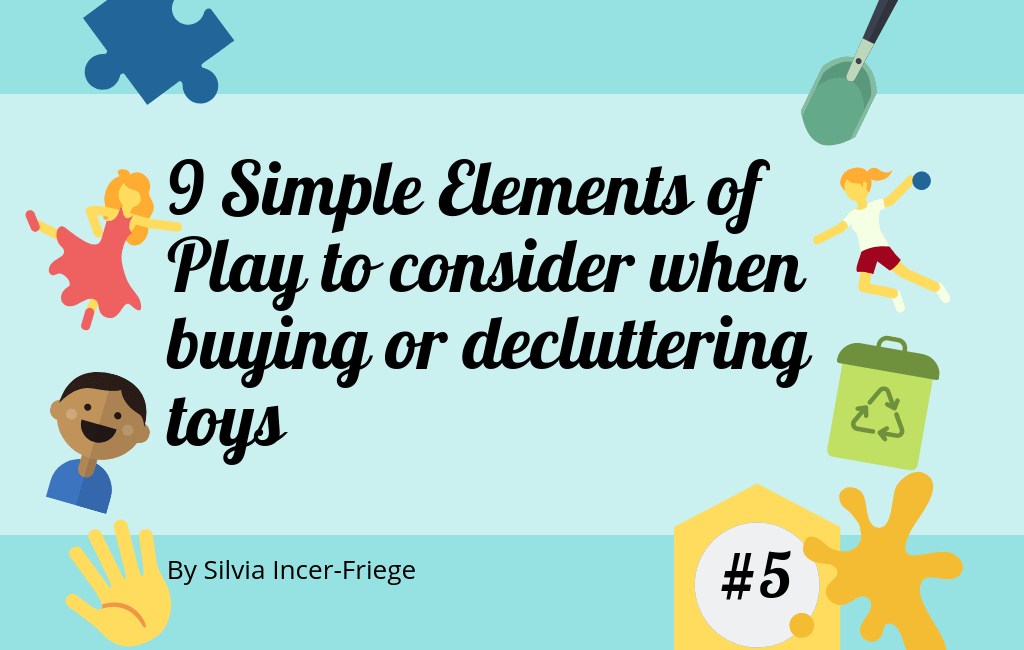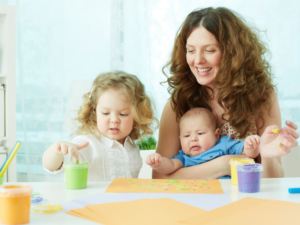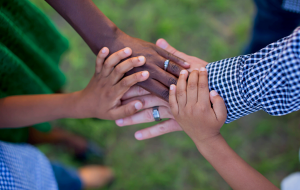As a parent, we tend to think a lot about how to provide our kids with a good play experience. Play usually translates to toys, for most people, although it definitely need not. From the very point of conception, we start buying toys. Often we end up with way too much and our homes start to closely resemble a kid’s toy store. I have actually walked into homes, rather I should say stumbled my way into homes with jumbo inflatable pools full of toys, bounce houses (also filled with toys), and mini mansions with hundreds of scary doll eyes staring at me. The overflow of stuff we bring into our homes is a serious issue to address because it isn’t healthy for our kids or the parents. News flash: More toys does not mean more fun!
I honestly believe no one starts buying stuff with the intention to overwhelm a child, of course not, that’s totally the opposite of our truest hopes for fun play. But sometimes it just happens without us noticing until we are knee deep into legos, books, and whatever else. So let’s first revisit what has been our traditional thought process when buying our kid’s toys. These are typical questions you probably asked yourself: Is it educational? Will it stimulate them? Can they learn a skill by playing with it? Is it fun?
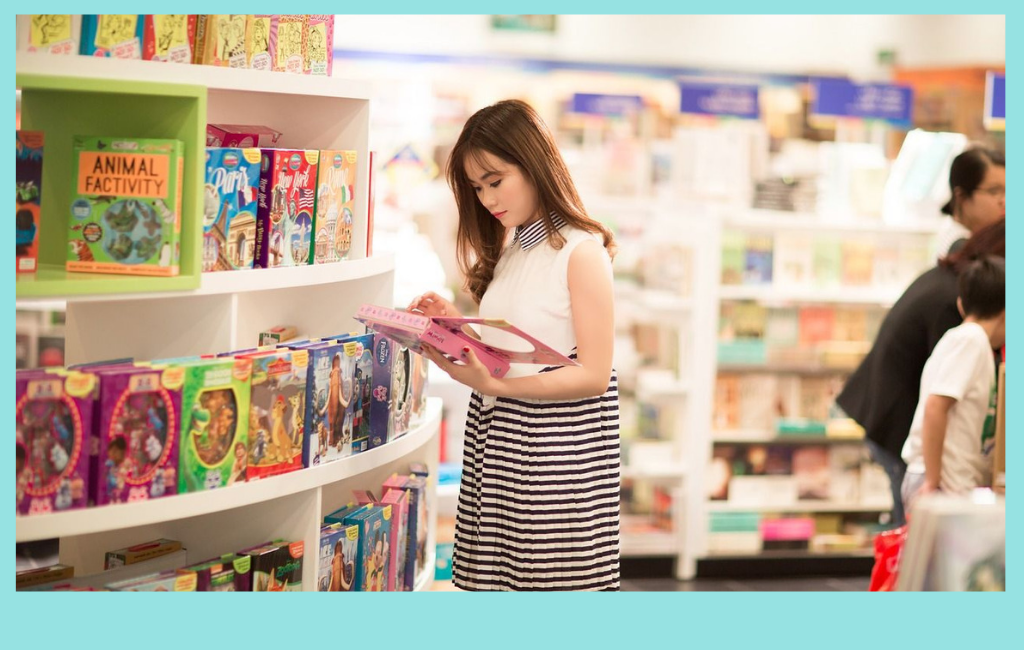
These are all perfectly good questions, however, I’d like to share with you the 9 elements of play I have come to embrace and use to put a toy to the test and seeing if its worthy of bringing it home. You can also test if your current toys include these elements to deem them worthy of keeping.
Now when I’m confronted with buying a new toy, handing over a toy which has been gifted, or designing a new toy for my UpUp Baby collection, I ask myself whether it contains any of the simple elements of play described by Kim John Payne in his revolutionary book, Simplicity Parenting. In this post, I’ll describe each of the nine elements and give examples of toys that have these qualities. I will also describe my process for designing a toy with elements of simple play to offer in my online shop. I hope this will serve as a great resource and guidance for when you’re wondering “should I really get this?” or “should I really keep this?” So let’s get to it!
Here’s a glance at the nine elements so you have a good reference point. Then we will go through each one.
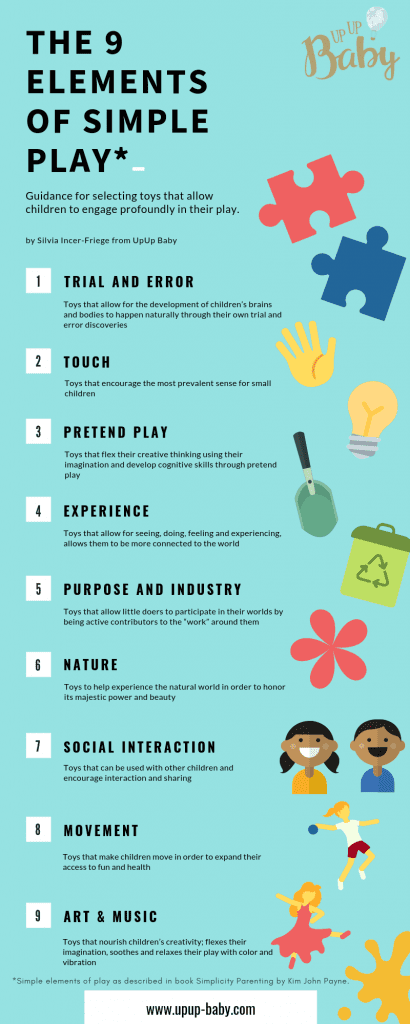

We have all had a good laugh watching our baby’s first crawls. Sometimes we cringe when we see them struggle to lift themselves up on the coffee table or when a toddler is trying very hard to fit a square block into a circular hole. It’s hard for us to watch our little ones fail, but holding back from helping right away or taking over to do it ourselves is so important to their development. So to you the parent: Back off! They need to figure it out through repeated attempts.
Keep this in mind when considering a toys for them too. If it has that type of trial and error challenge, then it’s a good sign your kids will spend quality time with it and actually advance on some good skills because of it. That time spent trying is also flexing their waiting and patience muscles for future use. Puzzles are fantastic toys with this element, given they are age appropriate for your child. For this reason I sought to create puzzles for the UpUp Baby collection and am so excited to feature our Wooden “Dots” Puzzles.
Questions to ask: Does the object allow a child to strive for the completion of something? If it doesn’t work out the first time, can they try again until succeeding?
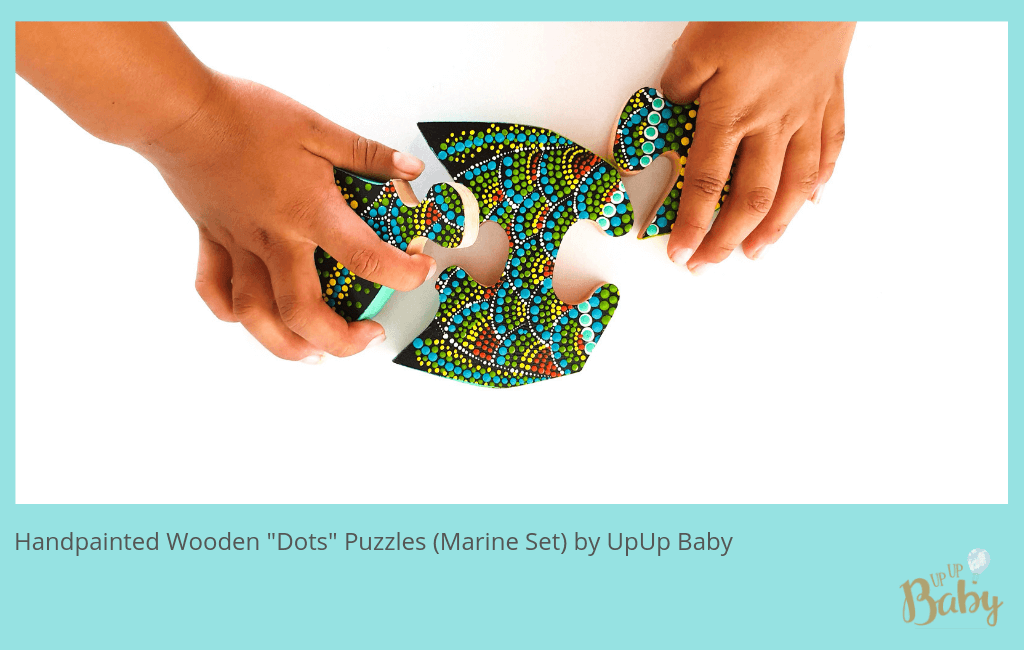

You definitely realize touch is a child’s most prevalent sense when you’re chasing behind them at your single friend’s perfectly manicured and nonchild-proof home. They want to grab everything! Of course they do, little children learn about their world by touching it. So the environment we provide should give them access to explore their touch sense. Books with furry dogs and leathery pigs have become popular for this reason.
I would encourage you to get out with your kids too. Simply laying on the grass for a picnic provides them with a world of touching experiences. They can feel the dirt, grass, rocks, or maybe even a ladybug. Just that gave them four completely different senses to experience. However, indoor play also works. Compliment their play with toys that are made from a variety of materials like cotton, wool, faux fur, and wood. Bring the outdoors in with a basket full of different stones, sticks, and feathers. Your creativity here can really shine to create endless opportunities to flex their senses.
Questions to ask: Does the object invite a child to flex their most prevalent sense muscle, touch? Can they feel it, allowing them to become aware of their world? It is made of natural materials they can touch?

I am amazed watching what my three year old son can come up with with just a few random items. I envy it, really. A child’s imagination is so special. You can cultivate this by providing them with a few special pieces that lend themselves to create stories and have open-ended play. It is said that pretend play or imaginary play helps little ones develop their executive function, which allows them to control their behavior, emotions, and impulses. Try to resist the urge to give them pre-packaged all inclusive pretend play sets as this can hinder their own creativity. The best part of pretend play is that there are no rules for what is what. Anything can be used and transformed.
Try out some silk scarves, extra pillows, or empty cardboard boxes. Just place them in the middle of the room and stand back in amazement at what kids come up with. Sometimes their interest call for some special pieces. This was my queue for creating UpUp Baby’s Wooden Doll Crib and Macrame Doll Hammock. My son loves playing with his stuffed dog Tibia and now he has a special place to rock her to sleep (or pretend she’s on a rocking boat). Likewise, my daughter takes her naps in a hammock (mind you we live in Nicaragua, hammock central), so I was inspired to create a Doll Hammock for her to sleep her stuffed animals just as she does. Wooden peg dolls are great too because they are not sophisticated, just plain little peg dolls allow children to imagine them as they wish. You can also try dress-up clothes and hats, or try making your own magic wand.
Questions to ask: Does it allow for imaginative play? Can a child use it for role-playing? Does it allow for open-ended play? Can it be transformed?
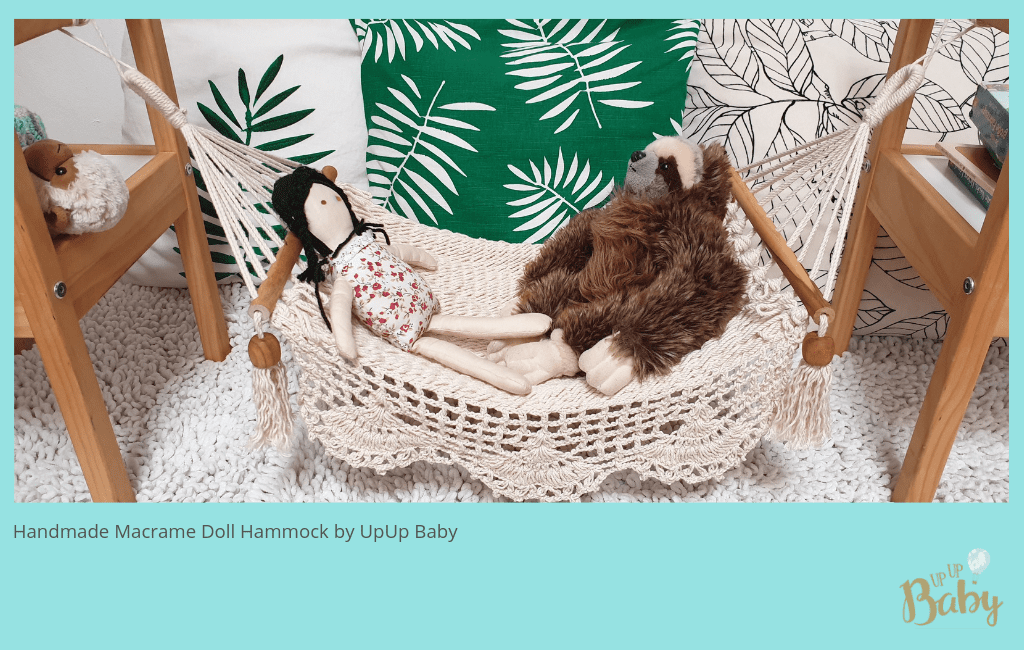

Doing, seeing, feeling and being is the key here. Pieces that allow a child to do, make or build are winners. Something as easy as pails and shovels can go a long way digging up sand, mud, rocks, etc. Remember your 1 year old dumping water from one cup to another during her evening bath? That’s experiencing water at its simplest form!
But let’s elevate that experience with outdoor exploration too. I filled an extra lunch bag we had with random items and called it our Detective Case. Inside I put a notepad and markers for note taking (my kids can’t write yet but they still mark it up), a small magnifying glass (a huge winner), a play camera, a scooper to dig up stuff, and a ziplock bag to bring home their findings. Our yard gets transformed into our own detective adventure. We track footprints, look under rocks (creepy), search for nests up in the trees, and spy on the ant trails. It’s an absolute experience!
Questions to ask: Can they see, do, feel and experience the world around them with this object? Rather than be entertained by it, can a child experience it?

Kids are the world’s greatest copy catters! We know this when we see them trying to handle the huge broom or clean the cat like my daughter loves to do. My son loves fixing his Bobby Car. So we got him two real screwdrivers (the little ones with the big round handles) and we prop the car up on two chairs so he can slide under and fix it. His little sister doesn’t quick get what he’s doing yet but she does like cleaning the car with a rag. It’s the perfect Auto Repair Shop.
Perhaps your little ones prefer helping in the kitchen or with the laundry. Don’t dismiss them because it will take you longer to finish the task, but get them involved, they will love it and will gain some good skills for later use! Consider getting them their own kid size but real tools like screwdrivers, pot and pans, brooms and dustpans, for example.
Questions to ask: Does the object allow a child to make something? Does it let them feel useful? Does it give them “work”?
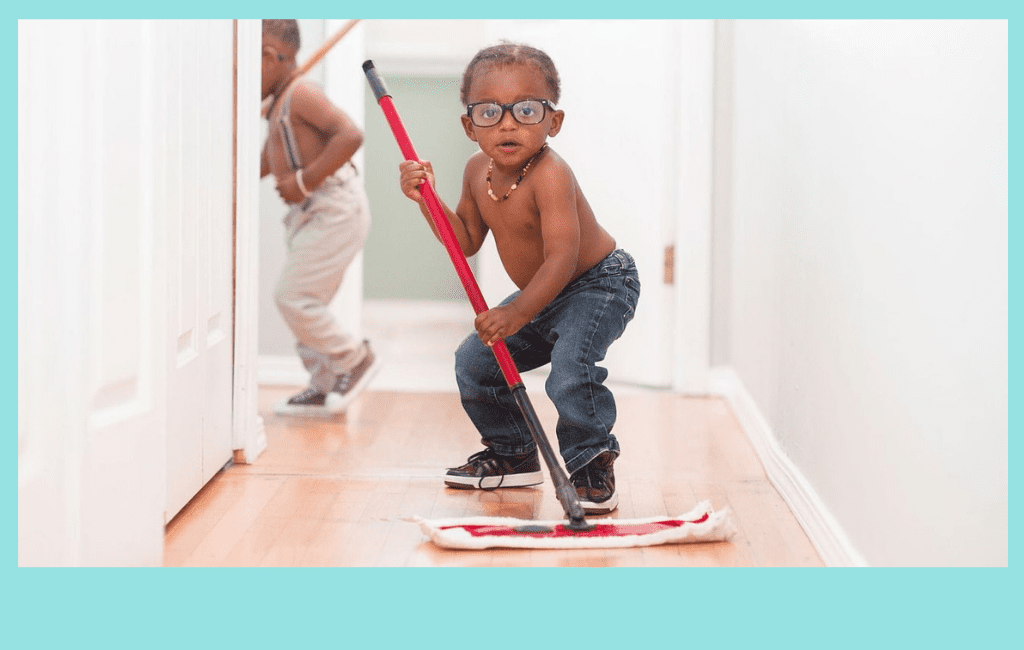

You know it and I know it! Get the kids out to experience and be in nature. Period. We moved our little family across the Atlantic from cold Germany to sunny Nicaragua for this very reason. Yes, we can experience amazing nature in Germany and we did. But we wanted to live in it everyday. We wanted the kids to grow up free range style. So far, we are living out our dream. The kids are out exploring our grounds every day. They eat fruit from the trees. They live with the random pets we now have (a dog, cat, goat, parakeets, and now a rescued baby chick). Our one year old daughter runs barefoot in the yard with no care in the world and our son loves the mud puddles after an afternoon shower.
Your family may not be up for moving to the jungle and you definitely don’t have to. Look up what parks, lakes, or forests are in your area. Nature is the ultimate toy for kids and it’s free so get out there.
Questions to ask: Does it lend itself to be in nature? It is made of natural materials?
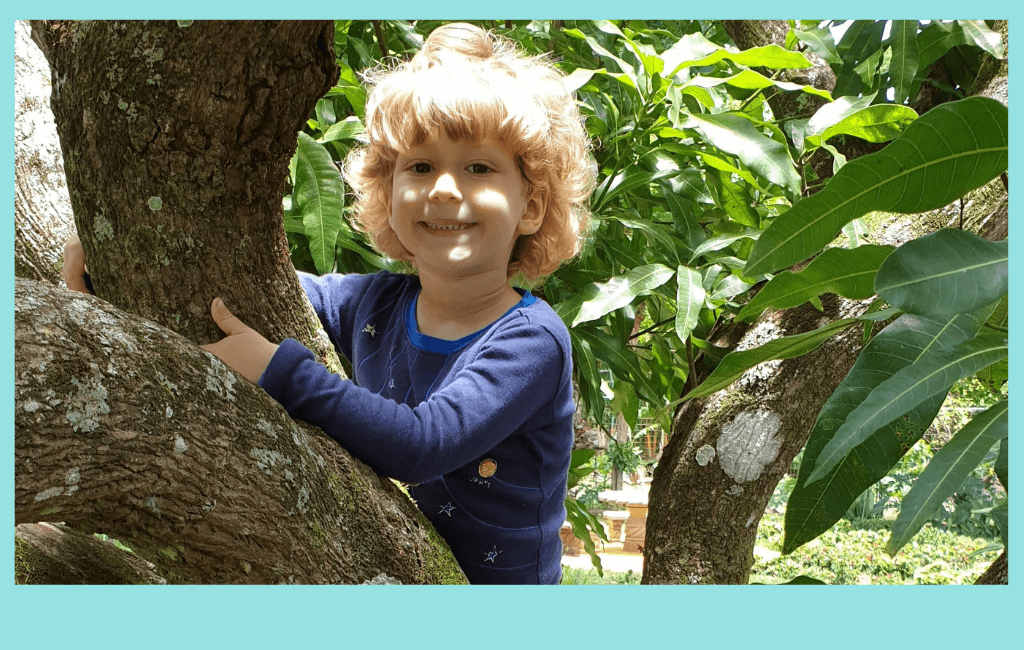

In Kim’s Simplicity Parenting book, he writes “The primary predictor of success and happiness in life is our ability to get along with others.” Read that again please. “The primary predictor of success and happiness in life is our ability to get along with others.” This isn’t just Kim saying that. Tons of studies and real life testimonies validate this. Happiness, which is what we all wish for our kids, depends on how well they can play, interact, and be with others. Therefore, social interaction is huge and should be a primary topic in our parenting agenda.
Opt for items that help them develop their social skills. I am currently in the process of designing our second collection for UpUp Baby and this is the play element I want to focus on a bit more. So I’m looking into creating games kids can play together with. Think along the lines of board games. But also consider objects for outdoor play with others like balls of all sorts, jump rope, or frisbee. Hit up your local play park at least once a week or schedule play dates.
Questions to ask: Can they use it to play with others? Is it multi-user? Does it inspire sharing?

Kids will lose your challenge to sit still every single time without fail. So don’t set them up for failure and accept the fact that kids need to move. See it as their way of growing. They literally need to jump, hop, run, crawl, and swing to develop some essential balance and coordination skills.
The UpUp Baby Macrame Baby Swing is a great example of the element of movement at play in our products. I chose to offer this swing because it allows a baby to feel the motion of swinging, in a beautiful handmade piece made of natural materials like wood and cotton. Since my one year old isn’t in full speed action yet like her brother, her swing allows her to feel the movement. Also, I opted to include a Kid’s Rocking Chair rather than a regular chair for this reason too. Rocking is just more fun than sitting! Other toys are the classic bikes, skates, jump ropes, and balls.
Questions to ask: Can a child move with or for the object? Can a child chase it or run or jump while playing with it?
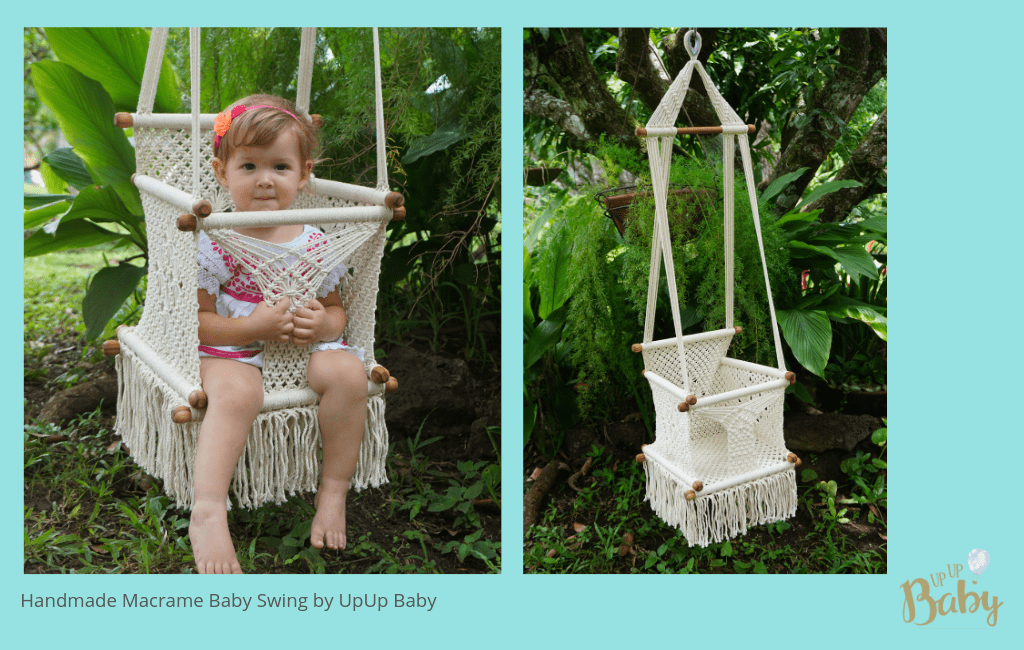

I think it’s true that art can be anything one creates. We should give our kids that very freedom to create as they wish. Arts & crafts have become very popular recently and it’s great. But we still tend to package things up in perfect kits with all the accessories included. Rather, I would encourage you to keep a box or drawer with some essential supplies like a variety of paper, glue, scissors, crayons, paints, features, cotton balls, popsicle sticks, and molding material and let your kids give it a go at creating art from scratch. For bigger kids, consider sewing kits, jewelry making, and maybe even pottery.
When I created UpUp Baby’s Wooden Dots Puzzles, I had this element in mind. Through the hand painted puzzles, I hoped to inspire kids to paint. I find dot art fascinating and thought that little ones would be amazed by what all those small dots can create. Check out my last blog post “The making of our Wooden “Dots” Puzzles” to see how we create these gorgeous pieces and for some ideas for you to try dot art at home with the kiddos.
Music is another form of art and kids should be able to express themselves through this as well. Music allows children to develop rhythm making. Consider wooden egg shakers, drums, maracas, rain sticks, and bells. Stay tuned for our next collection as we plan on including some really cool handmade musical instruments.
Questions to ask: Can a child create art and music with it? Does it allow their creativity to flow freely? Can they make a beat with it?
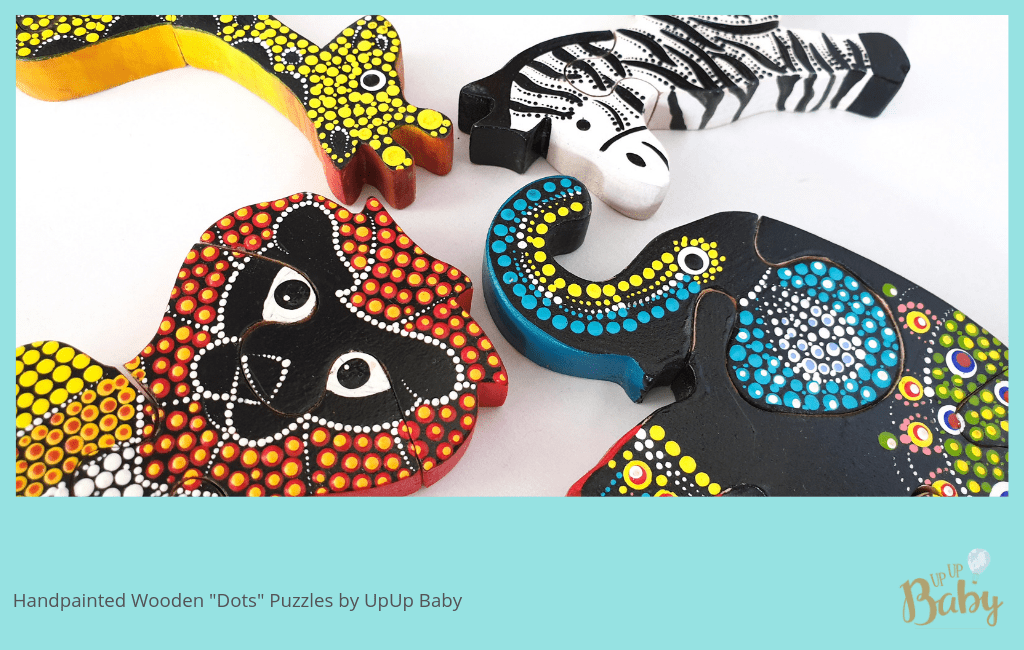

Choosing a child’s toy deserves careful consideration. After all, a child learns and develops best through play. They don’t need the latest gadget to have fun and gain good skills. The world around them is their playground. Nature provides a great deal of fun, learning, and development. But yes, toys are great too. So when you’re doing some toy shopping or decluttering your kid’s play room, ask yourself whether the toy in question has any of the nine simple elements of play. Doing this quick evaluation will guarantee that the toy gets maximum use and your child will truly value and enjoy it. One basket full of your child’s favorite toys played for countless hours in a hundred different ways is so much better than piles, boxes, or shelves full of toys, gadgets, and dolls that rarely get used often and end up collection dust.
I hope you found this post helpful. Tell me what you think. I’d love to hear how you and your family benefit from simplifying your kid’s toys.
Stay tuned for our future blog posts where I will get into more detail on some of the elements. Sign up for the UpUp Baby Newsletter to get our latest posts directly in your inbox.
With Love,
Silvia
